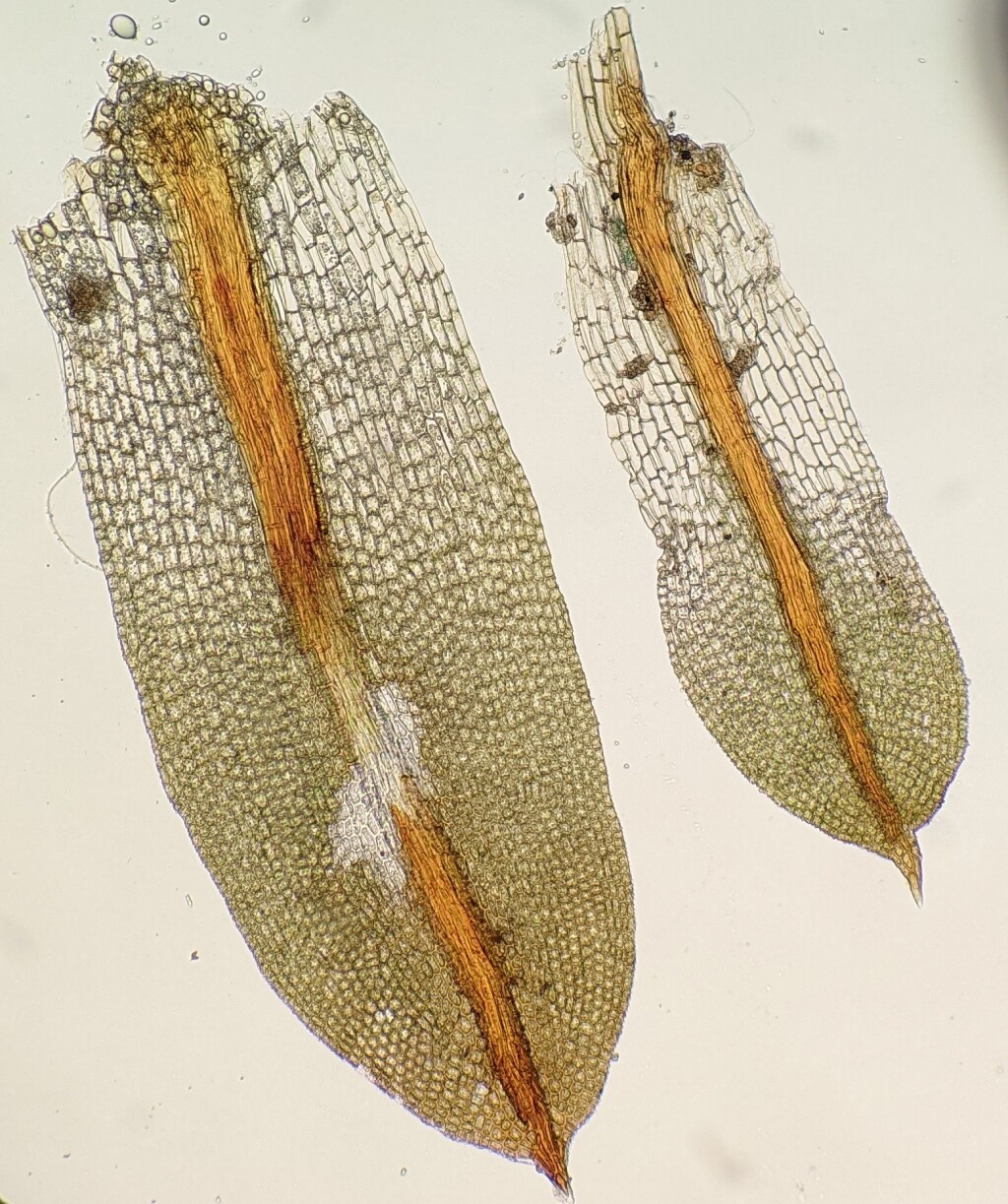Phascopsis
Dioicous. Asexual reproduction by modified deciduous leaves with thickened costae borne at stem apex and rhizoidal tubers. Stems simple or branching repetitively by subterminal innovations, with sparse colourless or pale reddish brown rhizoids near base; central strand present, weak; sclerodermis absent; hyalodermis absent. Leaves oblong to spathulate, increasing in size toward stem apices, toward apices erect or erecto-spreading and generally slightly incurved when moist, near base wide-spreading when moist, more incurved and scarcely twisted when dry; apices obtuse or acute, sometimes rounded; costae subpercurrent to percurrent in lowest leaves, excurrent and forming a cusp or a straight or bent arista in upper leaves, with quadrate to short-rectangular adaxial superficial cells, with a differentiated adaxial epidermis, with a stereid band circular in cross-section, with or without a hydroid strand, without a differentiated abaxial epidermis, with elongate abaxial superficial cells; margins entire, plane to erect or slightly incurved, especially on one side near base, sometimes slightly undulate, without a border; laminal cells in apical half quadrate, rounded-hexagonal or oblong, pluripapillose, with a red KOH reaction; basal laminal cells extending further near the costa, rectangular, decreasing in papillosity toward base where smooth. Acrocarpous. Capsule erect, straight, subglobose or broadly ellipsoid, apiculate, immersed, cleistocarpous, without an annulus. Calyptra mitrate, lobed, smooth. Peristome absent.
One species in southern Australia and possibly New Zealand (Glenny et al. 2011).
 Spinning
SpinningGlenny, D.; Fife, A.J.; Brownsey, P.J.; Renner, M.A.M; Braggins, J.E.; Beever, J.E.; Hitchmough, R. (2011). Threatened and uncommon bryophytes of New Zealand. New Zealand Journal of Botany 49: 305–327.


